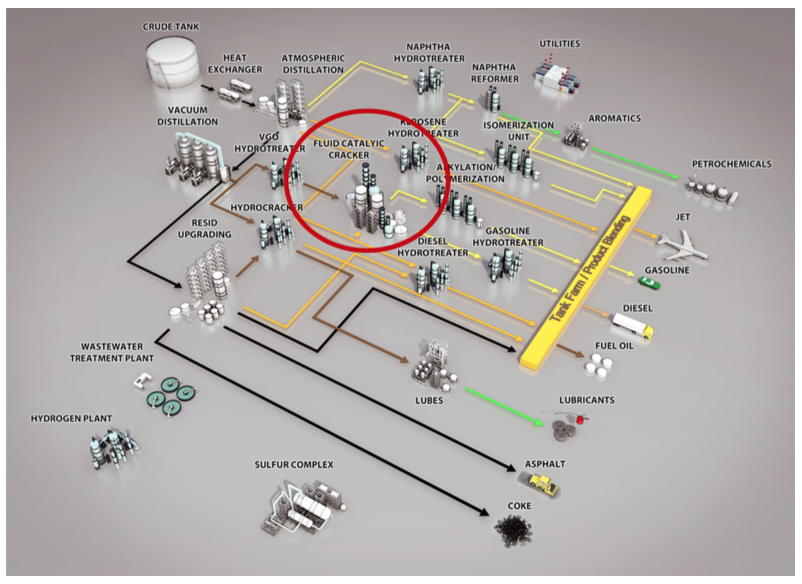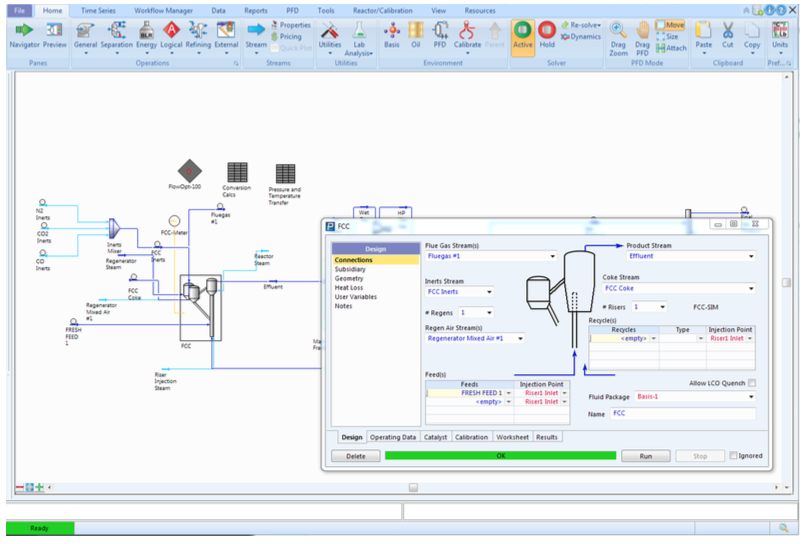FCC-SIM™
FCC unit operation is a key economic driver in many refineries. Do you need to evaluate feed alternatives for your unit? Are you air blower or regenerator constrained? Do you need to decide whether to push feed rate or conversion? FCC-SIM can help determine the answers to these important questions. It is based on a first-principles engineering framework and is an accurate, easy-to-use tool with over twenty years of application in refineries worldwide.
FCC-SIM is a valuable tool that can be used to analyse your FCC and predict results for a wide range of feedstocks and operating conditions. You can use FCC-SIM to answer “what if” questions, develop LP model coefficients, make catalyst decisions, monitor key processing parameters, and train personnel.
FCC-SIM is licensed for use on over 180 commercial FCC units by leading refining, catalyst, and engineering companies, making it the industry’s tool of choice.
Benefits:
- Set unit targets based on integrated optimiser results
- Use in an online optimisation application
- Generate a consistent set of LP vectors with accurate product yields and qualities and unit constraints for various feedstocks and operating severities
- Incorporate swing cut schemes
- Regenerate data when the model or LP structure changes
- Change catalyst composition (rare earth, alumina, zeolite)
- Determine effects of ZSM-5addition
- Simulate effects of nickel passivation
- Use lab data for catalyst comparison and evaluation
- Create a Catalyst Database to evaluate effects of different catalyst compositions on operation
- Examine FCC cause and effect relationships
- Investigate effects of wide variety of feed types
- Train unit personnel
- Track mass balance, heatbalance closure, catalyst circulation rate and other key process indicators
- Compare actual yields versus predicted
Features:
- A detailed kinetic model of the riser and reactor vessel, integrating cracking conversion from riser bottom to reactor outlet
- A detailed kinetic model of coke burning in the regenerator for either partial or full-burn operations
- Detailed characterisation for feeds and products by carbon number (C1–C80), allowing accurate representation for naphtha and distillate products, and gas oil and residual feeds
- Detailed feed characterisation including corearomatic ring distribution
- Flexible configuration unit swith multiple risers or regenerators can be modelled, as well as catalyst coolers
- A detailed catalyst activity model to account for fresh catalyst properties, feed stock contaminants, hydrothermal and coke deactivations and catalyst makeup
- Reaction section scaling for reconfiguration studies
- Abuilt-in data reconciliation tool for reconciling mass an delemental balances
- Automat
RatingVisits2,289Redirects329Don't Miss Out! Get the Best Deal on this Software - Email Us Now!




